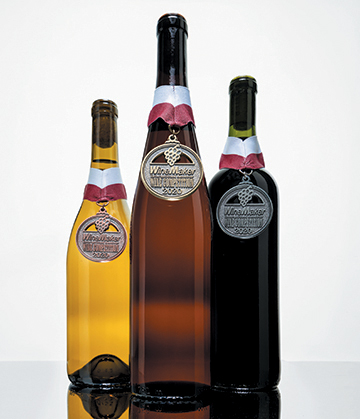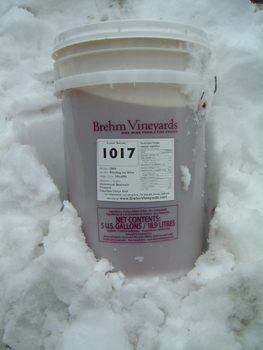
Generally there are three reasons we enter our wines into a competition. The first is for confirmation that the wine being produced in your winery is good quality and to obtain feedback to see if there are ways to continue to improve them. The second reason is to try to troubleshoot some character flaw in a wine that you can’t route out, whether it’s from a specific batch of wine or a recurring character. A third reason is to compete for medals and recognition against fellow hobbyists to see where your skills stack up. No matter what your reason for entering a specific wine in the next local, national, or international competition may be, there are a few things we should all adhere to when getting ready to send our wines to a competition.
Pre-Bottling
There is not much here that is outside your standard sound winemaking practices. A proper aging period is advisable, tasting periodically to track the progress of the wine. During aging both a heat and cold stabilization process should be included. Since your wine may see extreme temperatures out of your control, it’s best to mitigate these problems.
Regularly topping up the vessel while maintaining sulfite levels will give you the best chance of producing a clean wine. Oxidized wine is one of the most common flaws seen in amateur wine competitions and can be best avoided by topping up and keeping up on metabisulfite additions. Use your phone or computer to set monthly, or even bi-weekly, reminders.
Finally, be sure the wine sees an appropriate fining and/or filtration, or even a de-gassing, especially if you would like to enter a younger wine in a competition. Appearance is the first thing judges note when a wine is presented.
Bottling
When it comes to bottling, there are a few keys to getting it right. First off, you should not be doing anything to the wine on bottling day other than transferring into the bottle and sealing it up. Any final additions, blends, or other adjustments to the wine should have been done at least a week prior to bottling. (A final sulfite addition may be the only exception to this rule, but even with sulfite, it should be done at least two days prior to bottling.) You want to make sure the wine has time to integrate any of these changes with proper time to settle precipitates that may form.
Make sure your bottles are spotlessly clean; bio-films can easily be removed with the proper cleaning solution such as One-Step. If using corks, double check to make sure that they are the appropriate size for the bottles and they are not dried out if using natural corks. If you are shipping wines for competition, the bottle(s) will be out of your hands for a time. Making sure the closure is properly sealing the wine in and keeping oxygen out can assure you a cleaner assessment of your wine.
Entering Your Wine
So you’ve got a wine that you want evaluated. Resist the urge to send any wines that have just been bottled. Bottle shock is a real phenomenon and wine should not be evaluated for at least 30 days post-bottling day. Also, if you added too much sulfite near bottling to a red wine, it can have a bleaching effect. This is reversible, so giving the wine proper time in the bottle is important. White and rosé wines may be ready within a few months post-bottling, but you should probably wait upward of a year post-bottling to enter most red wines into a competition.
Selecting the correct category is fundamental to get an appropriate assessment of your wine. Having now worked as part of the team on the WineMaker International Amateur Wine Competition for 14 years, it still surprises me how many times wines will be entered into the wrong category. Make sure you have an understanding of the various categories, the varieties in your wines’ origins, blending requirements; all with an eye towards the category’s key expectations. If you are entering a wine in the Merlot category, expectations are that it is a red wine with at least 75% of the grape blend being Merlot. Blush/rosé wines have their own categories and should not be entered to be judged against their red counterparts.
Wine Shipping
One positive about entering wines in a local competition is that you avoid the cost of shipping. But to enter your wines in larger national or international competitions, this cost is often unavoidable. The first order of business when it comes to shipping wines is the packaging. Since the cost of shipping has gone up as high as it has in recent years, we highly recommend you don’t skimp on your packaging material. Purchasing packaging specifically for shipping wine will spare you the worry of, “Will my wines make it safely?”
Finally make sure all your paperwork is filled out cleanly and both it and the registration payments are easily visible to the person unpacking your wines. Each wine bottle should be properly marked to make it clear to those who process the wines. A Post-It® flag left hanging on the side of a bottle is probably not a smart idea. Also, this task should not be done after opening your second bottle of wine for the night. While this step may not be rocket science, you’re much more apt to miss key details with a foggy mind.
We wish you the best if you plan to enter a wine competition!







